#the third lunar mission of the Indian Space Research Organization (ISRO)
Text

#Chandrayaan-3#the third lunar mission of the Indian Space Research Organization (ISRO)#made a soft landing on the Moon.#World victorious tricolor dear#now the moon is ours🚀🇮🇳#India became the first country in the world to successfully reach the south polar region of the Moon. The landing of Chandrayaan-3 created#today is a proud day for India.#This historic and proud achievement is a symbol of determination#hard work and sacrifice of our scientists.#Congratulations to the countrymen and the entire ISRO team associated with Chandrayaan-3 and best wishes for the future.#ISRO#Chandrayaan3#Chandrayaan3Landing#VikramLander#दीनबंधुसरछोटूरामधाम#JatSewaSangh
1 note
·
View note
Text
Title: Chandrayaan 3: India's Next Giant Leap in Lunar Exploration
Introduction
In the realm of space exploration, India has emerged as a prominent player, making significant strides in recent years. One of the most awaited missions that has captured the world's attention is Chandrayaan 3, India's third lunar mission. Following the successes of Chandrayaan 1 and Chandrayaan 2, this mission promises to take India's lunar exploration endeavors to new heights. In this blog, we will explore the key aspects of Chandrayaan 3 and why it is so exciting for space enthusiasts and scientists alike.
Chandrayaan 3: A Brief Overview
Chandrayaan 3 is the third installment in India's Chandrayaan program, which aims to explore Earth's celestial neighbor, the Moon. The mission follows Chandrayaan 2, which was launched in July 2019 and achieved significant success, despite the Vikram lander's unsuccessful soft landing attempt.
Here are some key features of Chandrayaan 3:
Redefined Goals: Chandrayaan 3 builds upon the previous missions' successes and failures, with a primary focus on achieving a successful soft landing on the Moon's surface. This marks a crucial shift in the mission's objectives, as the previous Chandrayaan missions focused on lunar orbiters and exploring the Moon's surface from afar.
Collaborative Effort: The Indian Space Research Organisation (ISRO) is collaborating with various international space agencies and organizations for Chandrayaan 3, including NASA. This collaboration opens up opportunities for shared scientific discoveries and technological advancements.
Advanced Technology: Chandrayaan 3 will utilize cutting-edge technology and lessons learned from previous missions to enhance its chances of success. This includes improvements in navigation, communication, and landing systems.
Scientific Goals: While the primary aim is to achieve a successful soft landing, Chandrayaan 3 will also carry scientific instruments to conduct experiments on the Moon's surface, analyze lunar soil samples, and study the Moon's geology and topography.
Why Chandrayaan 3 Matters
Chandrayaan 3 is a mission of paramount importance for several reasons:
National Pride: India has shown tremendous growth in space technology and exploration. Chandrayaan 3 serves as a symbol of national pride and technological prowess, showcasing India's capabilities on the global stage.
Scientific Discovery: The mission is expected to provide invaluable data about the Moon's surface and geology, aiding our understanding of lunar history and the solar system's formation.
International Collaboration: By collaborating with international space agencies, India not only shares the costs and risks but also contributes to the global scientific community. Chandrayaan 3 is part of a larger effort to expand human knowledge beyond Earth.
Inspiration: Chandrayaan 3 inspires a new generation of scientists, engineers, and space enthusiasts in India and around the world. It fosters curiosity and encourages STEM (Science, Technology, Engineering, and Mathematics) education.
Conclusion
Chandrayaan 3 represents India's unwavering commitment to space exploration and scientific discovery. With its revised goals, international collaborations, and advanced technology, it has the potential to not only achieve a historic soft landing on the Moon but also contribute significantly to our understanding of the lunar surface and the solar system's mysteries.
As we eagerly await the launch of Chandrayaan 3, the world watches with bated breath, hoping for another success story that will leave an indelible mark on the annals of space exploration. This mission reinforces India's status as a rising space power and serves as a testament to the human spirit of exploration and curiosity that knows no bounds.
11 notes
·
View notes
Text
Chandrayaan-3: India's Historic Soft Landing on the Moon
Introduction
On August 23, 2023, India made history by successfully landing the Chandrayaan-3 spacecraft on the Moon’s South Pole. This was India’s third lunar mission, and its first soft landing since Chandrayaan-2 in 2019. The successful landing of Chandrayaan-3 is a major achievement for the Indian Space Research Organization (ISRO) and a significant step forward for India’s space…
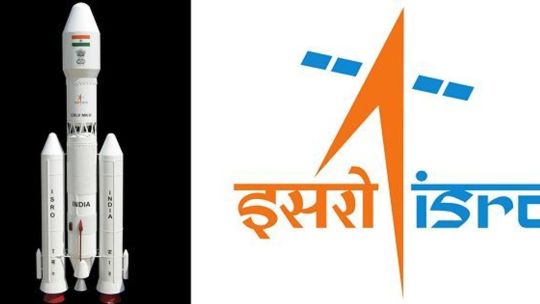
View On WordPress
#Chandrayaan-3#Chandrayaan-3 mission#India&039;s soft landing on Moon#Indian Space Research Organisation (ISRO)#lunar mission#Moon&039;s South Pole#Pragyan rover#scientific instruments#space exploration#Vikram lander
2 notes
·
View notes
Text
The ongoing most talk-of-the-town project that India has been successful in accomplishing is the launch of Chandrayaan-III on the 14th of July,2023. The Indian Space Research Organization has been working tirelessly round the clock for the third attempt of the landing of a satellite on the moon. The second one, most unfortunately, though have made a successful landing on the lunar body was not able to send any useful data our way because of damage due to landing impact. This is the reason why India attempts to make a soft landing, making it the fourth country after USA, China and the former Soviet Union to be able to do so, if successful. The satellite is aboard the heavy-lift LVM3-M4 rocket and took off from the Satish Dhawan Space Centre in Andhra's Sriharikota. Thousands of cheering citizens gathered to watch this historic milestone in India's space research and millions more tuned in live from television. The journey from Earth to moon is estimated of about a month with the landing date expected on August 23. Technicalities, however might postpone or prepone the landing. The satellite is designed to operate for a single lunar day, which is 14 Earth days thus giving ISRO Bengaluru scientists ample time to study the surface of this remarkable lunar body. The satellite is equipped with a lander, rover and a propulsion module and has an impressive weight of 3900 kilograms. Spanning a distance of 300,000 kilometers, it is said to reach the moon in the coming weeks.
India's space research has been highly significant in the past years with the mission to Mars raising our reputation in the world of planets for all eternity. Being the first nation to reach Mars in the very first attempt with a limited budget and continual criticism in tow, we have long earned our respect in the field. The might of the country and its citizens stands behind ISRO's attempt to take us even further in line and wish it all the very best for a successful landing on the moon.
2 notes
·
View notes
Link
On July 14th, 2023, the Indian Space Research Organization (ISRO) launched the third mission in its Chandrayaan (“Moon vehicle” in Hindi) lunar exploration program. Earlier this week (Wednesday, August 23rd), the Chandrayaan-3 mission’s Vikram lander touched down on the far side of the Moon, making India the fourth nation in the world to send missions to the lunar surface and the first to land one near the Moon’s south pole region. Shortly after that, the ISRO announced that they had deployed Pragyan, the rover element of the mission, to the surface. The ISRO shared the news via its official Twitter account on the evening of August 23rd, stating, “Chandrayaan-3 ROVER: Made in India. Made for the MOON! The Ch-3 Rover ramped down from the Lander, and India took a walk on the Moon!” Multiple updates followed, including how communications were established between the lander and the ISRO’s Telemetry, Tracking, and Command center and the Mission Control /Mission Analysis Room (ISTRAC-MOX) in Bengaluru, India, and how the rover had completed its first maneuvers and systems’ checks: “All planned Rover movements have been verified. The Rover has successfully traversed a distance of about 8 meters. Rover payloads LIBS and APXS are turned ON. All payloads on the propulsion module, lander module, and rover are performing nominally.” … … and here is how the Chandrayaan-3 Rover ramped down from the Lander to the Lunar surface. pic.twitter.com/nEU8s1At0W— ISRO (@isro) August 25, 2023 They also shared images of the lunar surface taken by Vikram’s Lander Horizontal Velocity Camera (LHVC) as it slowly descended. These and other images were stitched together to create animations of the lander’s descent and the rover’s deployment onto the surface (see above). The lander and rover will conduct science experiments on the surface, including characterizing the local environment, atmosphere, and surface composition while also scouting for resources (the most important being water ice). This research will enable future missions, which could include sending crews (vyomanauts) to the Moon. As noted, this mission is the first to land near the Moon’s South Pole-Aitken Basin, a highly significant accomplishment given that this is where multiple space agencies plan to establish habitats that will enable lunar research, exploration, and development. This includes NASA’s Artemis Program – which will lead to the Lunar Gateway and the Artemis Base Camp – and the Russian-Chinese International Lunar Research Station (ILRS). Under the circumstances, this successful landing and deployment show that India will likely be a crucial partner in any future lunar settlement. This is all the more poignant given the current competition between India and its Russian counterparts. Chandrayaan-3 launched on July 14th and established orbit around the Moon by August 4th, almost three weeks before making its descent. Meanwhile, Roscosmos launched its comparatively smaller and lighter Luna-25 mission on August 10th, reaching lunar orbit on the 16th. Roscosmos has reportedly scheduled a landing date for Monday, August 21st, but the mission controllers reported an “abnormal situation” that was later revealed to be due to an engine failure. This caused the mission to crash into the surface (in the southern Pontecoulant crater) two days before its scheduled landing. A day later, RussianSpaceWeb creator/publisher Anatoly Zak posted that according to rumors on Russian social media, “mission managers were pressured not to postpone the transfer to a lower orbit in order to beat an Indian lander to the lunar surface.” The Vikram lander with its ramp deployed to show how the rover will roll onto the surface. Credit: ISRO The fact that Chandrayaan-3 made it to the surface safely indicates that a slow and measured approach is better than a hasty one. It was also a welcome relief after the failure of Chandrayaan-2, which crashed on the lunar surface in September 2019 during an attempted landing. The lessons learned from that mission helped inform the design of Chandrayaan-3, which included improvements like autonomous attitude control, a Laser Doppler Velocimeter (LDV), greater systems redundancy, and stronger landing legs. The Pragyan rover will spend the next two weeks studying the composition of the lunar surface, measuring the presence of water in the regolith, and gathering data on the history of impacts in the region and the evolution of the Moon’s tenuous atmosphere. Similarly, the Vikram lander will rely on its suite of instruments to measure the thermal conductivity and temperature of the lunar surface, search for seismic activity around the landing site, and estimate the near-surface plasma density over time. Further Reading: ISRO The post India's Rover Rolls Out Onto the Lunar Surface appeared first on Universe Today.
0 notes
Text
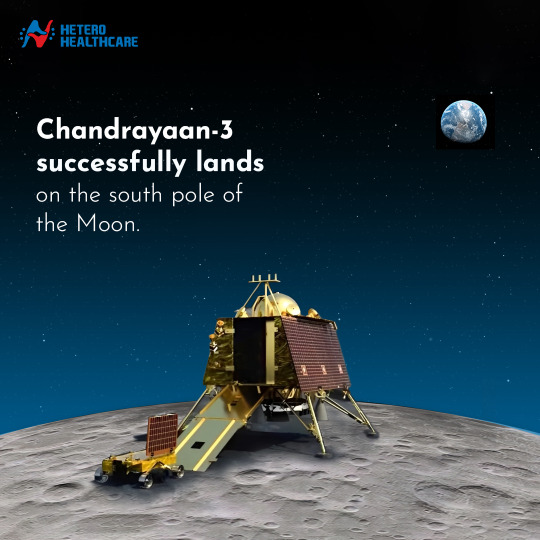
This is a historic moment for India, and for the world. Chandrayaan-3 is the third and most recent Indian lunar exploration mission, and its successful landing marks a major milestone in our journey to space.
The south pole of the Moon is a region that has never been explored by humans before. Chandrayaan-3 will conduct a variety of scientific experiments in this region, which is believed to be rich in water ice. These experiments will help us to better understand the Moon's history and evolution, and they could also lead to new discoveries about the Solar System.
We are grateful to the ISRO - Indian Space Research Organization team for their hard work and dedication in making this mission a success. This is a proud moment for India, and it is a reminder of our country's growing capabilities in the field of space exploration.
#Chandrayaan3#ISRO#ProudMoment#LunarExploration#SpaceMissionSuccess#ISROScientists#IndiaInSpace#InnovationUnleashed#MoonLandingSuccess#MoonExploration#WaterIceOnTheMoon#HeteroHealthcare
0 notes
Text
Chandrayaan 3's Lunar Landing Tomorrow, And why Luna-25 crashed. Get Live Updates!
Chandrayaan 3's Lunar Landing Tomorrow
The most considerable pride in the nation, Chandrayaan is now all set to create a history for its country and to make everyone proud. The spacecraft is nearer to the moon and ready for a safe and soft landing on lunar space by 23 August 2023.
The landing side is unexplored and it doesn't face Earth hence many called it the dark side of the moon as there must be some unknown elements that could benefit the economy.
The success of Chandrayaan-3 will be a major milestone for India's space program. It will be India’s third lunar mission and its first soft landing on the Moon's south pole. The mission is expected to give noticeable insights into the Moon's geology and history, as well as its potential for future exploration.
Chandrayaan 3 has a very high chance of competing said the chairman of ISRO Madhavan Nair, He explained how this time the scientists took notes from Chandrayaan 2 mistakes which leads to its failure in 2019.
On Sunday, The Indian Space Research Organisation announced that the second and final de-boosting operation for Chandrayaan-3 has successfully completed reducing the orbit of its lander module to 25km x 134km.
The Indian Space Research Organisation (ISRO) is all set to make Chandrayaan 3 a remarkable achievement. The main plan is to design a robust lander-rover duo to journey to the Moon together. The lander's process softly touches down at the Moon's surface, even as the rover rolls out and explores the lunar panorama. But right here's the capture: Chandrayaan 3 will differ from its predecessor, Chandrayaan 2, regarding the orbiter. Alternatively, of having a separate orbiter, Chandrayaan 3 will leverage the present orbiter from Chandrayaan 2. This smart approach helps to save resources and enhances the efficiency of the mission.
Chandrayaan 3's blueprint is based on valuable lessons learned from Chandrayaan 2. In the previous mission, while the orbiter achieved major success by capturing crucial data from the Moon's orbit, the lander faced challenges during the descent and couldn't make a soft landing. As we eagerly look ahead to the project's release and subsequent updates, one component is sure: Chandrayaan 3 will now not best inspire the following technology of scientists and engineers but also contribute considerably to humanity's knowledge of the cosmos.
Why Luna-25 crashed? Russia explains
According to CNBC, The head of the space agency of Russia reported Monday that the Luna-25 spacecraft crashed with the lunar terrain posterior to its mechanisms faltering in their endeavor to properly turn off. In addition, he voiced his stricture towards the nation's prolonged interruption in lunar exploration spanning several decades, attributing it to the unfortunate circumstance. Roscosmos Director General Yury Borisov said the spacecraft's machines were turned on over the weekend to put Luna-25 into a “pre-landing route" but did not shut down properly, plunging the lander onto the moon.
The trial Luna-25 had been listed to land Monday while aiming to come the first spacecraft to touch down on the south pole of the moon, an area where scientists believe important reserves of frozen water and precious rudiments may live.
0 notes
Text
DAILY DOSE: Indian Space Research Organization beams back images of the moon from its Chandrayaan-3 lunar orbiter.
The Indian Space Research Organization (Isro) has released the first images of the Moon from its Chandrayaan-3 spacecraft, following its Lunar Orbit Insertion (LOI) on August 5, 2023. This marked a significant milestone in India’s third lunar mission, as the spacecraft entered the Moon’s orbit after a 384,400 km journey, escaping Earth’s gravity. The health of Chandrayaan-3 is being continuously…

View On WordPress
0 notes
Text
Chandrayaan 3 Launch Date: Indian Space Research Organisation (ISRO) Prepares for Third Lunar Mission in Pursuit of a Noteworthy Accomplishment
The Indian Space Research Organisation (ISRO) is currently making extensive preparations for the upcoming Chandrayaan 3 lunar mission. With India’s sights set on achieving a remarkable milestone, the organization is diligently working towards ensuring the success of this ambitious endeavor.
ISRO’s Chandrayaan 3 Set for Third Lunar Expedition, Aiming to Join Prestigious Group of Nations in…
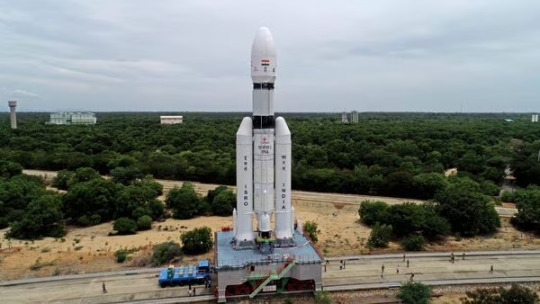
View On WordPress
1 note
·
View note
Text
ISRO-The Indian Space Agency
ISRO stands for Indian Space Research Organization, it is the national space agency of India and was established in 1969 by Vikram Sarabhai in Bengaluru. The chairman of ISRO is Shri S. Somnath who succeeded Dr. K Sivan in 2022.
LAUNCH VEHICLES
1)Satellite Launch Vehicle(SLV-3)
· First launch vehicle made by India, it had its first successful launch in 1980 and made India the 6th country in the world with orbital launch capabilities.
2) Augmented Satellite Launch Vehicle(ASLV)
· Another small satellite launch vehicle launched in 1980s to put the satellite into geostationary orbit. It was dropped due to insufficient funds and multiple failures.
3) Polar Satellite Launch Vehicle(PSLV)
· First Indian medium lift launch vehicle that has enabled India to put all its remote sensing satellites into sun synchronous orbit. It is India’s primary launch vehicle with more than 50 launches.
4) Geosynchronous Satellite Launch Vehicle (GSLV)
· Envisioned in 1990s to deliver heavier payloads into orbit. India had to make its own cryogenic engine (CE-7.5).
5) GSLV Mark III(LVM3)
· ISRO’s heaviest rocket and helps India deliver all its communication satellites. It is also expected to carry out India’s first manned mission the Gaganyaan.
MANGALYAAN
The Mangalyaan is India’s approach to the red planet. It was India’s first interplanetary mission and was launched on 5thNovember 2013 and has been orbiting Mars since September 2014. It made ISRO the 4th space agency to achieve Mars orbit, it made India the first Asian country to reach Martian Orbit and the first country in the world to achieve so in its maiden attempt. Another amazing fact about the Mangalyaan mission is that it just cost $75 million which is a third of the budget of the movie ‘Martian’. ISRO plans to launch another mission to mars the Mangalyaan-2 by 2025 and possibly touch the Martian surface.
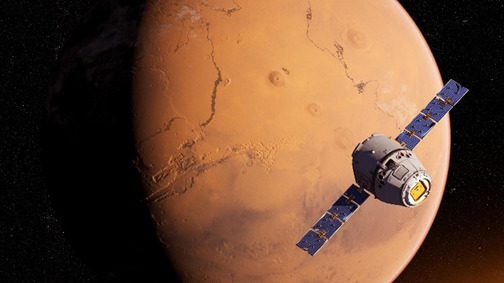
(The Mangalyaan orbiting Mars. By- https://amuedge.com/edl-challenges-with-indias-mangalyaan-2-mission-part-i/)
CHANDARYAAN
The Chandaryaan missions are India’s trips to the moon. Chandaryaan-1 was launched way back in 2008 and made India the 4th country in the world to have its flag on the moon. It was intended to work for 2 years but due to technical issues, it had to be retired after 312 days but, it achieved most of its objectives such as testing the soil for water traces. Chandaryaan 2 is ISRO’s latest lunar mission that targeted the south pole of the moon in an attempt to find frozen water and was supposed to be the 4th country to soft land at the south pole of the lunar surface but the Vikram lander crashed into the Lunar surface due to a last-minute glitch in the soft landing guidance software led to the failure of the lander's soft landing attempt after a successful orbital insertion. The Chandaryaan 3 will be India’s 3rdlunar mission and will attempt to soft land on the south pole of the moon but unlike the Chandaryaan-2, it not have an orbiter.

(Chandaryaan 2. Source- https://www.planetary.org/space-images/indias-mars-orbiter-mission-hardware)
GAGANYAAN
It will be India’s attempt to put a person in space. There have been a few Indians in space such as Rakesh Sharma and Kalpana Chawla but none of them flew as an Indian astronaut. Rakesh Sharma was a cosmonaut and Kalpana Chawla was an American astronaut. The mission has been designed for 3 people but the upgraded version will have rendezvous and docking capabilities. Prior to the actual launch of the astronauts, there will be 2 test unmanned flights the first one being in June 2022. The final manned mission is expected to be sometime in 2023. The Vikas engine will be used for the mission which is the core stage of the GSLV mk3. Vyommitra a robot will be on the unmanned missions to see the effect microgravity will have on human bodies, unlike other space agencies that use animals for the same
BIBLOGRAPHY:
1. https://www.isro.gov.in/
2. https://amuedge.com/edl-challenges-with-indias-mangalyaan-2-mission-part-i/
3. https://www.planetary.org/space-images/indias-mars-orbiter-mission-hardware
41 notes
·
View notes
Photo
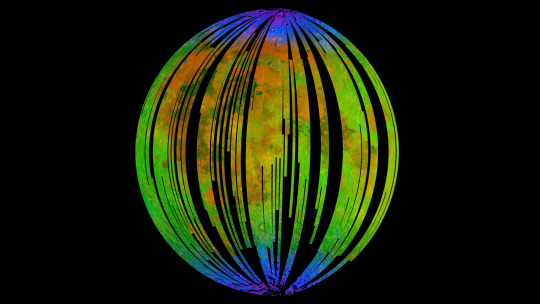
The Moon Is Rusting, and Researchers Want to Know Why While our Moon is airless, research indicates the presence of hematite, a form of rust that normally requires oxygen and water. That has scientists puzzled. Mars has long been known for its rust. Iron on its surface, combined with water and oxygen from the ancient past, give the Red Planet its hue. But scientists were recently surprised to find evidence that our airless Moon has rust on it as well. A new paper in Science Advances reviews data from the Indian Space Research Organization's Chandrayaan-1 orbiter, which discovered water ice and mapped out a variety of minerals while surveying the Moon's surface in 2008. Lead author Shuai Li of the University of Hawaii has studied that water extensively in data from Chandrayaan-1's Moon Mineralogy Mapper instrument, or M3, which was built by NASA's Jet Propulsion Laboratory in Southern California. Water interacts with rock to produce a diversity of minerals, and M3 detected spectra - or light reflected off surfaces - that revealed the Moon's poles had a very different composition than the rest of it. Mars has long been known for its rust. Iron on its surface, combined with water and oxygen from the ancient past, give the Red Planet its hue. But scientists were recently surprised to find evidence that our airless Moon has rust on it as well. A new paper in Science Advances reviews data from the Indian Space Research Organization's Chandrayaan-1 orbiter, which discovered water ice and mapped out a variety of minerals while surveying the Moon's surface in 2008. Lead author Shuai Li of the University of Hawaii has studied that water extensively in data from Chandrayaan-1's Moon Mineralogy Mapper instrument, or M3, which was built by NASA's Jet Propulsion Laboratory in Southern California. Water interacts with rock to produce a diversity of minerals, and M3 detected spectra - or light reflected off surfaces - that revealed the Moon's poles had a very different composition than the rest of it. Intrigued, Li homed in on these polar spectra. While the Moon's surface is littered with iron-rich rocks, he nevertheless was surprised to find a close match with the spectral signature of hematite. The mineral is a form of iron oxide, or rust, produced when iron is exposed to oxygen and water. But the Moon isn't supposed to have oxygen or liquid water, so how can it be rusting? Metal Mystery The mystery starts with the solar wind, a stream of charged particles that flows out from the Sun, bombarding Earth and the Moon with hydrogen. Hydrogen makes it harder for hematite to form. It's what is known as a reducer, meaning it adds electrons to the materials it interacts with. That's the opposite of what is needed to make hematite: For iron to rust, it requires an oxidizer, which removes electrons. And while the Earth has a magnetic field shielding it from this hydrogen, the Moon does not. "It's very puzzling," Li said. "The Moon is a terrible environment for hematite to form in." So he turned to JPL scientists Abigail Fraeman and Vivian Sun to help poke at M3's data and confirm his discovery of hematite. "At first, I totally didn't believe it. It shouldn't exist based on the conditions present on the Moon," Fraeman said. "But since we discovered water on the Moon, people have been speculating that there could be a greater variety of minerals than we realize if that water had reacted with rocks." After taking a close look, Fraeman and Sun became convinced M3's data does indeed indicate the presence of hematite at the lunar poles. "In the end, the spectra were convincingly hematite-bearing, and there needed to be an explanation for why it's on the Moon," Sun said. Three Key Ingredients Their paper offers a three-pronged model to explain how rust might form in such an environment. For starters, while the Moon lacks an atmosphere, it is in fact home to trace amounts of oxygen. The source of that oxygen: our planet. Earth's magnetic field trails behind the planet like a windsock. In 2007, Japan's Kaguya orbiter discovered that oxygen from Earth's upper atmosphere can hitch a ride on this trailing magnetotail, as it's officially known, traveling the 239,000 miles (385,00 kilometers) to the Moon. That discovery fits with data from M3, which found more hematite on the Moon's Earth-facing near side than on its far side. "This suggested that Earth's oxygen could be driving the formation of hematite," Li said. The Moon has been inching away from Earth for billions of years, so it's also possible that more oxygen hopped across this rift when the two were closer in the ancient past. Then there's the matter of all that hydrogen being delivered by the solar wind. As a reducer, hydrogen should prevent oxidation from occurring. But Earth's magnetotail has a mediating effect. Besides ferrying oxygen to the Moon from our home planet, it also blocks over 99% of the solar wind during certain periods of the Moon's orbit (specifically, whenever it's in the full Moon phase). That opens occasional windows during the lunar cycle when rust can form. The third piece of the puzzle is water. While most of the Moon is bone dry, water ice can be found in shadowed lunar craters on the Moon's far side. But the hematite was detected far from that ice. The paper instead focuses on water molecules found in the lunar surface. Li proposes that fast-moving dust particles that regularly pelt the Moon could release these surface-borne water molecules, mixing them with iron in the lunar soil. Heat from these impacts could increase the oxidation rate; the dust particles themselves may also be carrying water molecules, implanting them into the surface so that they mix with iron. During just the right moments - namely, when the Moon is shielded from the solar wind and oxygen is present - a rust-inducing chemical reaction could occur. More data is needed to determine exactly how the water is interacting with rock. That data could also help explain another mystery: why smaller quantities of hematite are also forming on the far side of the Moon, where the Earth's oxygen shouldn't be able to reach it. More Science to Come Fraeman said this model may also explain hematite found on other airless bodies like asteroids. "It could be that little bits of water and the impact of dust particles are allowing iron in these bodies to rust," she said. Li noted that it's an exciting time for lunar science. Almost 50 years since the last Apollo landing, the Moon is a major destination again. NASA plans to send dozens of new instruments and technology experiments to study the Moon beginning next year, followed by human missions beginning in 2024 all as part of the Artemis program. JPL is also building a new version of M3 for an orbiter called Lunar Trailblazer. One of its instruments, the High-resolution Volatiles and Minerals Moon Mapper (HVM3), will be mapping water ice in permanently shadowed craters on the Moon, and may be able to reveal new details about hematite as well. "I think these results indicate that there are more complex chemical processes happening in our solar system than have been previously recognized," Sun said. "We can understand them better by sending future missions to the Moon to test these hypotheses." IMAGE....The blue areas in this composite image from the Moon Mineralogy Mapper (M3) aboard the Indian Space Research Organization's Chandrayaan-1 orbiter show water concentrated at the Moon's poles. Homing in on the spectra of rocks there, researcher found signs of hematite, a form of rust. Credit: ISRO/NASA/JPL-Caltech/Brown University/USGS
5 notes
·
View notes
Photo
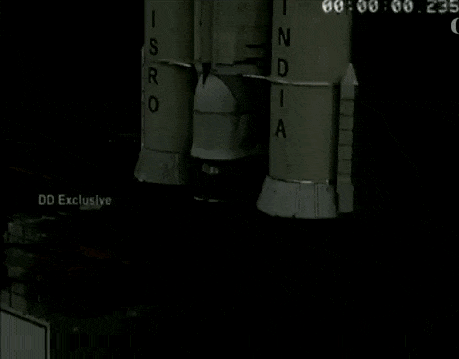
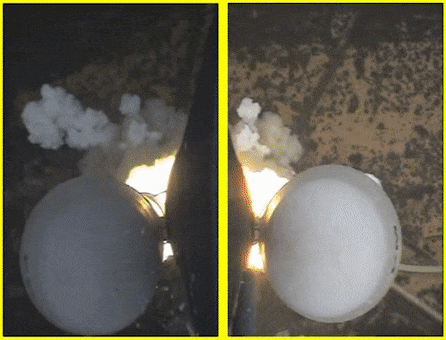
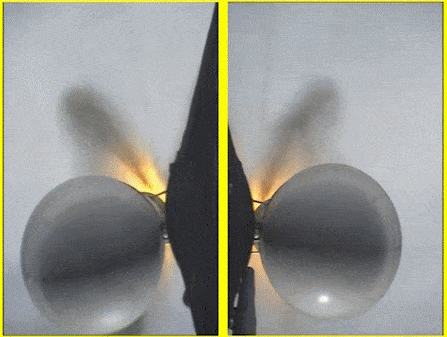



India launches first lunar lander, rover, on Chandrayaan-2 mission (July 22, 2019).
Closing out a week of historic lunar anniversaries, India’s space research organization, ISRO, attempted to make history of their own Monday morning with the launch of the Chandrayaan-2 lunar mission.
The spacecraft is part of the Indian Space Research Organization's, or ISRO, Chandrayaan lunar exploration program, which first saw an orbiter mission launch in 2008.
Chandrayaan-2 is a far more ambitious mission that includes three distinct spacecraft, an orbiter, lander, and rover. If successful, it will mark only the fourth time that a country has softly landed on the moon, behind Russia, the United States, and China.
The 5,244 pound Chandrayaan-2 orbiter will perform orbital measurements and serve as a communications link between ground controllers and the lander. Eight experiments will collect data on the lunar surface and environment, as well as surface mapping. Engineers estimate a one-year lifespan for the orbiter.
Named after the founder of Indian space program, the 3,183-pound Vikram lander carries three experiments to measure the Lunar surface, atmosphere, and interior. Additionally, Vikram will transport the mission’s third component, a small, six-wheeled rover named Pragyan.
Weighing in at just 60 pounds, Pragyan, which translates to wisdom in Sanskrit, will be India’s first mobile robotic explorer on another world. Its two science experiments will perform laser spectroscopy and X-ray spectrography. Pragyan will travel up to half a kilometer per day with a top speed of 1 centimeter per second. Engineers expect both the Vikram lander and Pragyan rover to operate for one lunar day, or two Earth weeks.

The combined Vikram lander/Pragyan rover, left, is seen integrating with the Chandrayaan-2 orbiter, right at the Satish Dhawan Space Center’s integration building prior to launch. P/c: ISRO
A long spiral to the Moon.
Liftoff occurred on the first scientific flight of India’s largest rocket, the GSLV-MkIII, which made its first flight in 2014. Liftoff occurred at 5:13am EDT, or 2:43pm India Standard Time, from the Second Launch Pad of the Satish Dhawan Space Centre in India.
Following separation of the rocket’s side boosters, core stage, and payload fairing, Chandrayaan-2 achieved Earth orbit 16 minutes after launch.
Chandaryaan-2 will use a low-energy flight profile for its voyage to the moon that will take up to 44 days to achieve its final orbit. The spacecraft will use its onboard engines to gradually rise its apogee – or furthest point in its orbit – performing a Lunar Orbit Insertion burn 30 days after liftoff.
The spacecraft will then spend the next 13 days gradually lowering its apogee to create a circular orbit 100 kilometers above the lunar surface. 48 days after liftoff, the Vikram lander with Pragyan inside is slated to touch down near the lunar south pole. ISRO Chairman Dr. K. Sivan expects the landing to occur on September 7.
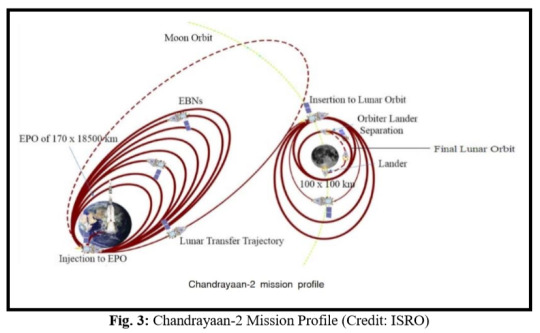
Chandryaan-2 was originally a joint Indian-Russian mission slated to launch in 2011; financial woes, coupled with the high profile failure of the Phobos Grunt Mars mission with Europe ultimately caused Russia to pull out of the project. India’s commitment to complete the missions by themselves pushed the launch to 2018 and further technological hurdles ultimately caused the mission to be delayed to the first half of 2019.
Click here to see our GSLV launch vehicle archive.
youtube
P/c: ISRO.
207 notes
·
View notes
Text
ISRO aims to launch Gaganyaan before August 15
ISRO aims to launch Gaganyaan before August 15
The Indian Space Research Organization is targeting to launch Chandrayaan-3, the first of two planned uncrewed flights under the Gaganyaan mission before Independence Day this year, and the third lunar mission Chandrayaan-3 by “mid-next year”, chairman Dr K Sivan said on Monday. Said to ,
“If you look at the urgent work this year, we have several missions to execute. Some of these are the launch…
View On WordPress
#Chandrayaan-3#current#harpianews#India#Indian Space Research Organization#indianexpress#ISRO#isro latest news#latest#mission work#news
0 notes
Text
Now Chandrayaan-3 will be launched in 2022, Chandrayaan-2 orbiter will be used
Now Chandrayaan-3 will be launched in 2022, Chandrayaan-2 orbiter will be used
ISRO chief, K Sivan
Chandrayaan-3, the country’s third and ambitious lunar mission, will be launched by the end of next year. Indian Space Research Organization (ISRO) chief K Sivan said the launch of several projects, including Chandrayaan-3 and the country’s first manned space mission Gaganyaan, were delayed due to the lockdown triggered by the Corona epidemic.
Sivan said, Chandrayaan-3 will…
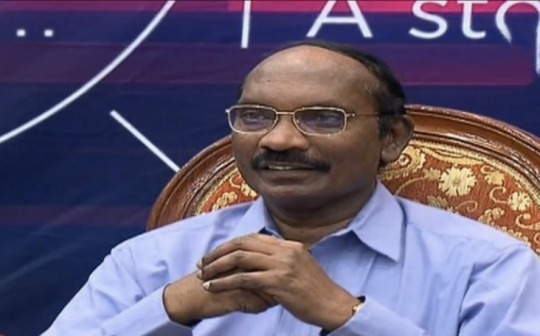
View On WordPress
0 notes
Text
Chandrayaan-3: India announces third moon mission
Chandrayaan-3: India announces third moon mission
At a news conference Wednesday, Indian Space Research Organization (ISRO) chairman K. Sivan said that the government has approved a third lunar mission. The mission, named Chandrayaan-3 — which means “moon vehicle” in Sanskrit — will include a new propulsion module, moon lander and rover, Sivan said.
The new equipment would cost around $35 million, with its launcher costing a further $51…
View On WordPress
0 notes
Text
Chandrayaan 3 On Track, Will Aim For Launch In 2021 🌙
Chandrayaan 3 On Track, Will Aim For Launch In 2021 🌙
ISRO (Indian Space Research Organization) chief K. Sivan on jan 1 2020 announced that India’s third lunar mission, Chandrayaan 3 is on and has been approved by the Indian government
(more…)
View On WordPress
0 notes